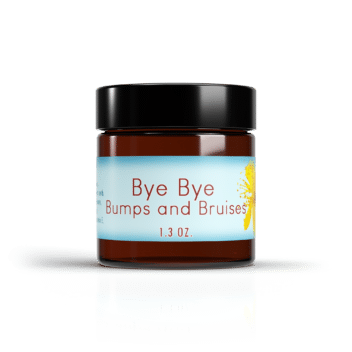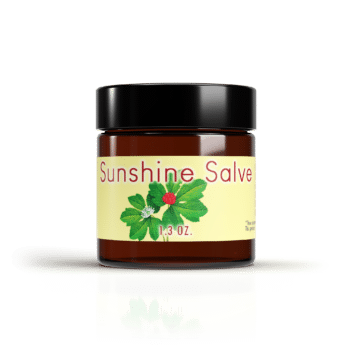
Comfrey Root in Herbal Medicin
Comfery Root in Herbal Medicine
Comfrey root, a staple in herbal medicine for centuries, is renowned for its therapeutic properties. This humble plant has been used by various cultures to support healing and wellness. In this article, we will explore the benefits, properties, and applications of comfrey root in herbal medicine.
Understanding Comfrey Root
Comfrey (Symphytum officinale) is a perennial herb native to Europe and parts of Asia. The plant is characterized by large leaves, bell-shaped flowers, and a deep root system. The root, in particular, is rich in beneficial compounds that contribute to its medicinal value.
Botanical Characteristics
Comfrey is easily recognized by its broad, hairy leaves and clusters of bell-shaped flowers, which range in color from white to purple. The plant can grow up to 4 feet tall and prefers moist, fertile soil. Its roots are thick and tuberous, extending deep into the ground, which allows the plant to access nutrients and moisture that are not available to many other plants.
Historical Overview
Comfrey has been used in traditional medicine for thousands of years. Ancient Egyptians used it for its healing properties, while in Europe, it was a common remedy during the Middle Ages. This historical usage underlines the plant’s longstanding reputation as a potent natural healer, valued for its ability to treat a variety of ailments.
Cultivation and Harvesting
Cultivating comfrey requires minimal effort once the plant is established. It is a hardy plant that can thrive in various climates and soils. Harvesting is typically done in the spring and fall when the concentration of active compounds in the roots is at its peak. Proper drying and storage of the roots are essential to preserve their medicinal properties.
The Active Compounds
Comfrey root contains several active compounds, including allantoin, rosmarinic acid, and tannins. These substances are believed to promote cell regeneration, reduce inflammation, and provide pain relief. Allantoin, in particular, is known for its ability to stimulate new cell growth, making it a popular ingredient in skincare products.
Allantoin: The Regenerative Agent
Allantoin is a key compound in comfrey root that promotes the growth of new tissue. It is widely used in skincare products for its ability to repair damaged skin and promote healing. This compound is not only beneficial for skin health but also plays a crucial role in the repair of internal tissues, making it invaluable in herbal medicine.
Rosmarinic Acid: The Anti-Inflammatory
Rosmarinic acid is another significant compound found in comfrey root, known for its strong anti-inflammatory properties. It helps reduce swelling and pain, making it an effective treatment for conditions like arthritis and muscle injuries. This compound also has antioxidant properties, which protect cells from damage by free radicals.
Tannins: The Astringent
Tannins in comfrey root have astringent properties that can help tighten and tone tissues. They are effective in reducing bleeding and swelling, which is why comfrey root has been traditionally used to treat wounds and bruises. Tannins also have antimicrobial properties, providing an additional layer of protection against infections.
Comfrey Root Benefits
Wound Healing
Comfrey root has been traditionally used to speed up the healing process of wounds. Its high concentration of allantoin helps in cell proliferation, which is crucial for tissue repair. Topical applications of comfrey root ointments or poultices can aid in healing minor cuts, bruises, and abrasions.
Mechanism of Action
The healing properties of comfrey root stem from its ability to stimulate fibroblast activity, which is essential for tissue repair. Allantoin encourages the growth of new skin cells, helping to close wounds quickly and prevent scarring. This makes comfrey root an effective natural treatment for various skin injuries.
Clinical Studies
Several studies have examined the effectiveness of comfrey root in wound healing. Results generally show that comfrey preparations significantly reduce healing time and improve the appearance of scars. These findings support the traditional use of comfrey root in herbal medicine.
Application Methods
Comfrey root can be applied as a poultice, ointment, or infusion to treat wounds. It’s important to ensure the preparation is applied to clean, unbroken skin to avoid the absorption of potentially harmful compounds. Regular application can enhance the healing process and provide soothing relief.
Pain Relief
The anti-inflammatory and analgesic properties of comfrey root make it an effective natural remedy for pain. People often use it to alleviate discomfort associated with arthritis, sprains, and muscle soreness. By reducing inflammation, comfrey root can offer significant pain relief for various conditions.
Anti-Inflammatory Action
Comfrey root reduces inflammation through the action of compounds like rosmarinic acid. These compounds inhibit the production of inflammatory mediators, helping to decrease swelling and pain. This makes comfrey root particularly beneficial for conditions that involve chronic inflammation.
Usage for Musculoskeletal Pain
Comfrey root is commonly used to relieve musculoskeletal pain. Whether it’s a sprained ankle or a sore back, topical applications can reduce pain and improve mobility. This makes it a popular choice among athletes and individuals with active lifestyles.
Complementary Therapies
Comfrey root can be used alongside other natural therapies to enhance pain relief. Combining it with treatments like massage or acupuncture may provide synergistic benefits, offering more comprehensive relief from pain and inflammation.
Skin Health
Comfrey root’s ability to promote cell regeneration makes it beneficial for maintaining healthy skin. It can be used to treat conditions like eczema, psoriasis, and acne. The soothing properties help calm irritated skin, while the regenerative effects support healing and rejuvenation.
Treating Dermatological Conditions
For conditions like eczema and psoriasis, comfrey root can offer significant relief. Its anti-inflammatory properties reduce redness and swelling, while allantoin promotes the repair of damaged skin. This dual action helps manage symptoms and improve skin appearance.
Acne Management
Comfrey root’s antimicrobial and astringent properties make it a useful treatment for acne. It helps reduce sebum production and tightens pores, preventing the formation of new blemishes. Regular use can lead to clearer, healthier skin.
Enhancing Skin Appearance
Beyond treating skin conditions, comfrey root can improve overall skin appearance. Its regenerative properties support collagen production, enhancing skin elasticity and reducing the appearance of fine lines and wrinkles. This makes it a valuable addition to any skincare routine.
Comfrey Root in Herbal Medicine
Historical Uses
Comfrey root has a long history of use in traditional medicine. Ancient Greeks and Romans utilized it for wound treatment and bone fractures. In medieval Europe, it was a common remedy for respiratory issues and gastrointestinal problems.
Ancient Civilizations
In ancient times, comfrey was highly regarded for its healing properties. The Greeks and Romans used it to treat a variety of ailments, from fractures to open wounds. Its reputation as a “cure-all” plant was well established in these cultures, highlighting its importance in historical medicine.
Medieval Applications
During the Middle Ages, comfrey was a staple in European herbal medicine. It was used to treat respiratory ailments, digestive disorders, and even as a tonic to promote general health. This widespread use underscores the plant’s versatility and effectiveness.
Traditional Practices
Traditional healers often combined comfrey with other herbs to enhance its healing properties. These combinations were tailored to treat specific conditions, demonstrating the adaptability of comfrey root in herbal medicine practices.
Modern Applications
Today, comfrey root continues to be valued in herbal medicine. It is often used in salves, creams, and poultices for external application. Though its internal use is controversial due to the presence of pyrrolizidine alkaloids (PAs), which can be toxic to the liver, its topical benefits remain widely recognized.
Topical Preparations
Comfrey root is commonly found in topical preparations such as creams, balms, and salves. These products are designed to deliver the beneficial compounds directly to the affected area, providing targeted relief for pain and inflammation.
Controversy and Caution
The internal use of comfrey root is discouraged due to the presence of pyrrolizidine alkaloids, which can cause liver damage. Regulatory agencies have issued warnings against the oral consumption of comfrey products, emphasizing the importance of cautious use.
Integrating into Modern Herbalism
Despite the controversy surrounding its internal use, comfrey root remains a popular choice in modern herbalism. Practitioners appreciate its effectiveness in topical applications and continue to explore safe ways to harness its healing potential.
Comfrey Root Properties
Anti-inflammatory Effects
The anti-inflammatory properties of comfrey root are attributed to compounds like rosmarinic acid and tannins. These substances help reduce swelling and inflammation, making comfrey root an excellent choice for managing conditions like arthritis and joint pain.
Mechanisms of Inflammation Reduction
Comfrey root’s anti-inflammatory effects are achieved through the inhibition of enzymes that promote inflammation. By reducing the production of these enzymes, comfrey helps to alleviate pain and swelling, providing relief for inflammatory conditions.
Studies and Evidence
Research has demonstrated the effectiveness of comfrey root in reducing inflammation. Studies show that topical applications can significantly decrease swelling and pain, supporting its use in conditions like arthritis and musculoskeletal injuries.
Long-term Management
For individuals with chronic inflammatory conditions, regular use of comfrey root can provide ongoing relief. Its natural properties offer an alternative to pharmaceutical options, reducing the risk of side effects and promoting holistic health.
Bone and Joint Support
Comfrey root is sometimes referred to as “knitbone” due to its traditional use in treating bone fractures. The allantoin in comfrey root supports the healing of bones and connective tissues. While more research is needed, its historical use suggests potential benefits for bone health.
Historical Context
The nickname “knitbone” reflects comfrey’s historical use in promoting bone health. Healers believed that comfrey could speed up the healing process of fractures and support the overall integrity of the skeletal system.
Current Perspectives
Modern herbalists continue to explore comfrey’s potential benefits for bone health. While scientific research is limited, anecdotal evidence suggests that comfrey root may aid in the recovery of bone injuries and support joint health.
Complementary Bone Health Strategies
Using comfrey root in conjunction with other natural remedies for bone health, such as calcium supplements or vitamin D, may enhance its effects. This holistic approach can provide comprehensive support for bone and joint wellness.
Safety and Precautions
External Use
While comfrey root is beneficial for external applications, it is important to use it cautiously. Avoid applying it to broken skin or deep wounds. Prolonged use on large skin areas should be avoided to prevent absorption of toxic compounds.
Guidelines for Safe Use
To ensure safe use, comfrey root should only be applied to clean, intact skin. Avoid using it on open wounds or areas with compromised skin integrity. Limiting application time and frequency can also reduce the risk of adverse effects.
Recognizing Adverse Effects
Potential side effects of comfrey root include skin irritation or allergic reactions. If you experience any adverse effects, discontinue use immediately and consult a healthcare professional. Monitoring your skin’s response is crucial when using comfrey products.
Professional Guidance
Consulting with a qualified herbalist or healthcare provider can help you use comfrey root safely and effectively. They can provide personalized recommendations and ensure that comfrey is appropriate for your specific health needs.
Internal Use
The internal use of comfrey root is not recommended due to the presence of pyrrolizidine alkaloids, which can cause liver damage. Always consult with a healthcare professional before using comfrey root or any herbal remedy internally.
Risks of Internal Consumption
Consuming comfrey root internally poses significant health risks. Pyrrolizidine alkaloids are known to cause liver toxicity, and long-term consumption can lead to serious health complications, including liver failure.
Regulatory Recommendations
Health authorities worldwide advise against the internal use of comfrey. Many countries have banned or restricted comfrey products intended for oral consumption, reflecting the potential dangers of its internal use.
Exploring Alternatives
For those seeking internal remedies, other herbs and natural treatments may offer similar benefits without the associated risks. Consulting with a healthcare professional can help identify safe and effective alternatives for your health concerns.
Conclusion
Comfrey root holds a significant place in herbal medicine, primarily for its external applications. Its ability to promote healing, reduce inflammation, and provide pain relief makes it a valuable natural remedy. However, caution should be exercised, especially regarding its internal use.
Incorporating comfrey root into your herbal medicine routine can offer numerous benefits, provided it is used responsibly and under professional guidance. Whether you’re seeking relief from pain or looking to enhance skin health, comfrey root may be a beneficial addition to your natural healing toolkit.
By understanding the properties and applications of comfrey root, you can harness its potential to support your wellness journey naturally and effectively. Always prioritize safety and consult with healthcare professionals to ensure the best outcomes when using herbal remedies.


